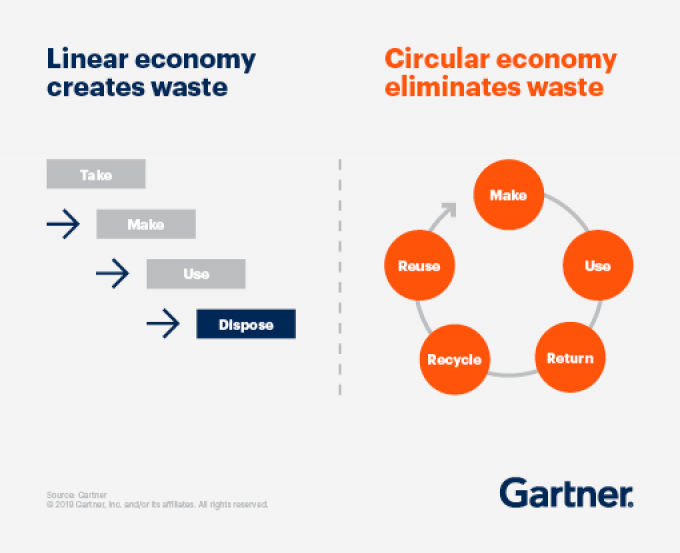On the wires: From the Gartner Hype Cycle to... blood cobalt, hydrogen & more
Alternatives sought

Supply chain executives need to prepare to transform their operations from a linear to circular model, as sustainability increasingly becomes a priority for consumers and corporations alike.
According to supply chain consultancy Gartner, the economy is increasingly becoming “circular”, which it defines as “an economic model that separates the ability to achieve economic growth from the consumption of natural resources”, and which has been championed by former British solo sailor Ellen MacArthur.
“Circular economic business models encourage continuous reuse of materials to minimise ...
Outlook for container shipping 'more uncertain now than at the onset of Covid'
Teamsters union vows UPS will be 'in for a hell of a fight' over jobs cull
Shippers warned: don't under-value US exports to avoid tariffs – 'CBP will catch you'
Cancelled voyages take the sting out of spot rate declines this week
New Houthi warning to shipping as rebel group targets specific companies
K+N CEO unveils impact of US import tariffs on China-origin goods
Blanked sailings in response to falling demand 'just a stop-gap solution'
More pressure on transpacific rates as carriers bet on a China-US trade deal
CMA CGM to reflag box ship as the French carrier eyes growing Indian market
Boeing looks to resell up to 50 aircraft rejected by Chinese buyers
'Strong start' to 2025, despite market uncertainty, says Kuehne + Nagel
US Customs chaos means 'more downside risk than upside potential' for air cargo
Taiwan ministries act to mitigate effect of trade war on agriculture exports
Wan Hai joins box shipping 'arms race', but avoids Chinese yards for newbuilds
MOL signs up with Climeworks for direct air carbon capture and storage


Comment on this article